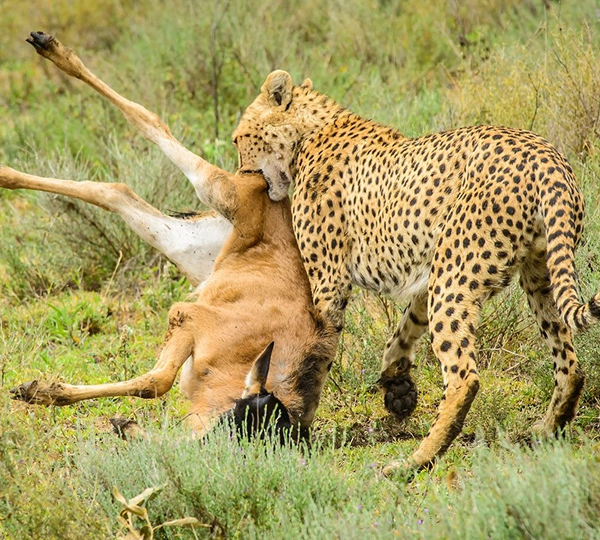Serengeti National Park stands as the preeminent wildlife sanctuary globally, celebrated for its unparalleled natural beauty and scientific significance. It hosts the most extensive concentration of plains game across the African continent.
Established in 1952 in Tanzania, Serengeti is renowned for the grandeur of the greatest wildlife spectacle on Earth – the extraordinary migration of wildebeest and zebra. Additionally, the park boasts a remarkable resident population of lions, cheetahs, elephants, giraffes, and a diverse array of bird species. Accommodation options vary from luxurious lodges to mobile camps, offering visitors a wide selection to suit their preferences. Encompassing 5,700 square miles (14,763 square kilometers), it surpasses the size of Connecticut while accommodating at most a couple of hundred vehicles at any given time.
The park is divided into three distinct sections. The popular southern/central area known as Seronera Valley, referred to by the Maasai as the “serengit” or land of endless plains, features classic savannah landscapes dotted with acacias teeming with wildlife. The western corridor is delineated by the Grumeti River, characterized by denser forests and bush. The less frequented northern Lobo area meets Kenya’s Masai Mara Reserve.
Within this vast region of 30,000 square kilometers, two World Heritage Sites and two Biosphere Reserves have been established. This unique ecosystem has inspired various artists, filmmakers, photographers, scientists, and writers, contributing their works to illuminate the park’s wonders.
The Serengeti ecosystem represents one of the planet’s oldest environments, where climate, vegetation, and wildlife have remained relatively unchanged for millennia. Early human presence is evidenced in Olduvai Gorge dating back two million years. Certain life patterns, including adaptation, migration, life, and death, resonate with ancient history.
However, it’s the migration that epitomizes Serengeti’s fame. Every October and November, over a million wildebeest and around 200,000 zebras journey south from the northern hills to the southern plains for the short rains. Come April, May, and June after the long rains, they swirl west and north. Their instinctual urge to move remains steadfast, defying obstacles such as droughts, gorges, and crocodile-infested rivers.
The migratory path traverses various parks, reserves, and protected areas, showcasing diverse habitats. Explore with us the manifold vegetation forms and landscapes within the Serengeti ecosystem while encountering some of its most captivating inhabitants along the way.

